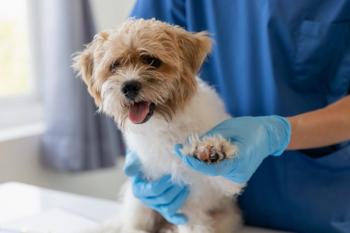
New Mexico veterinary official says vesicular stomatitis outbreak is 'significant'
Regulation on livestock movement in effect until state is declared free of VS.
New Mexico Livestock Board state veterinarian Dave E. Fly, DVM, has said in a release issued June 20 that an outbreak of vesicular stomatitis (VS) in the state is significant. Initially found in the outskirts of Tularosa, Otero County, in April, suspected cases of the viral disease have been reported in southwestern San Miguel and northern Socorro counties. The board says counties along the path of the Rio Grande are at greater risk, as the disease tends to appear along waterways.
VS, which affects cattle, horses and other livestock animals, can have dramatic economic repurcussions on food producers. It is spread by biting insects, according to health officials, and the virus is shed heavily by infected animals. As a result the disease can be spread by water and feed buckets, bits, tack and other objects infected animals come in contact with. Once cases appear, vesicular stomatitis generally remains active until hard freezes occur in the late fall or winter.
The board has implemented a state code restricting the movement of livestock from VS-quarantined premises and mandating specific inspection and certification requirements for in-state and out-of-state livestock travel. Colorado has also issued a new requirement for horses entering the state from New Mexico. State veterinary officials there say health certificates for horses, mules, cattle, bison, sheep, goats, swine and camelids from New Mexico now must include a statement from a veterinarian stating that no signs of vesicular stomatitis have been found in the animals and that the animals haven’t come from a facility that was quarantined for the disease.
The New Mexico Livestock Board recommends that veterinarians and livestock owners observe the following guidelines to help prevent and control the spread of the virus:
• Use insect repellant products, fly sheets and other measures to keep biting insects off animals.
• Take steps to control or eliminate sites where biting insects such as flies or mosquitoes might multiply.
• Check animals daily for signs and lesions suggesting the presence of the disease, and report any suspicious lesions to a veterinarian or to the state veterinarian’s office immediately.
• Avoid travel to areas of the state where active cases are documented or to areas considered higher risk for the emergence of cases.
Newsletter
From exam room tips to practice management insights, get trusted veterinary news delivered straight to your inbox—subscribe to dvm360.






